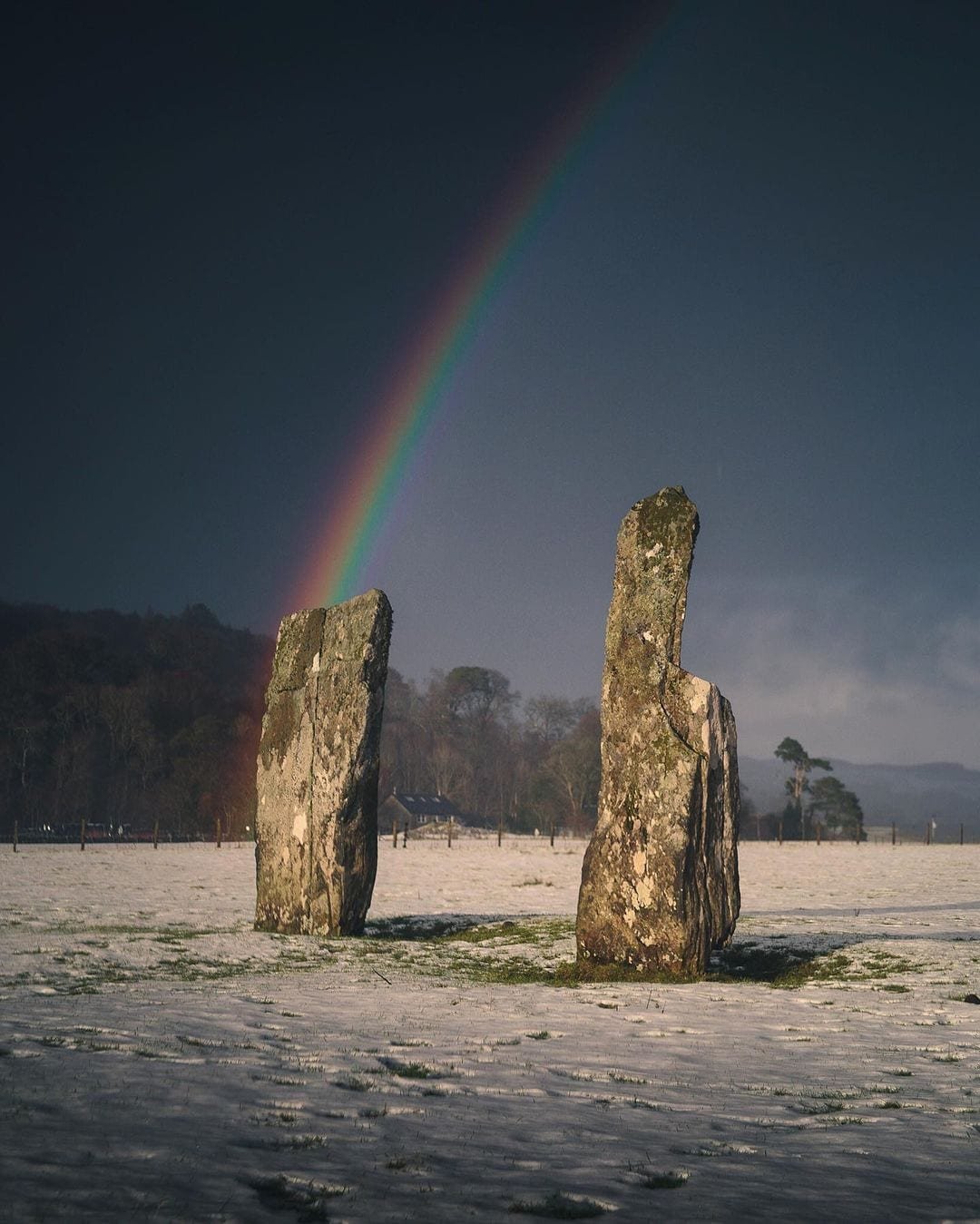

Kilmartin Glen is renowned for its striking Bronze Age and Neolithic remains, from burial cairns to carved rock, forts and more. There are over 350 ancient monuments reaching a six-mile radius of Kilmartin village and, tucked into an unassuming sheep field just south of the main village, is a mysterious arrangement of five standing stones.
The Nether Largie Standing Stones are arranged into an ‘X’ formation, with two pairs of stones, reaching an average of 2.85 metres high, placed north and south of the field and surrounding a larger stone of nearly 3 metres. Some of these stones display cup marks, with the largest central stone showing 23 cup marks. Of these 23 circular depressions, three are surrounded by ring carvings.
Like with many historical standing stone arrangements, the Nether Largie Standing Stones invite many questions from visitors, including the most inevitable: “why?”
There are several theories surrounding the origin of this intriguing prehistoric exhibition, from the less-favourable goal-post set up (based on the positions of the southern and northern pairs of stones, suggesting a historical football pitch) to the more agreeable lunar observatory theory.
If the more serious theory of a lunar observatory reigns true, then our neolithic ancestors could have been monitoring the rising and setting cycles of the moon as well as possible solar alignment observations. Still, there is no certainty.
What adds to this Scottish mystery are the dates archaeologists have pulled together: The stones are said to have been placed in Kilmartin Glen around 3,200 years ago, yet the circular engravings date back almost 1,500 years further, suggesting that the stones were carved before they were carried to their new home.
Nowadays, the stones have cultivated various superstitions: Good fortune may be gained by camping nearby, yet touching the mystical stones could bring about bad luck.
The Nether Largie Standing Stones remains to be one of the greatest mysteries of Kilmartin Glen. What can be interpreted, however, is that these archaeological features were of great importance to the inhabitants of the Bronze Age, even if the reasons behind their placement are kept a fascinating secret.

Photo by @lochgmarcp

No listings with this search
WIN
A 2 NIGHT STAY
AT THE GART MANSION

This prize includes a champagne reception, three course meal and a breakfast hamper on both mornings. And is worth over £10,000.
Already have an account? log in here
You are now signed up for the Hidden Scotland Journal, a free weekly email. Would you also like to gain free access to the full features of Hidden Scotland? To find out more sign up below.
Already have an account ? Log in here
By entering your email, you agreee to recieve marketing emails from Hidden Scotland